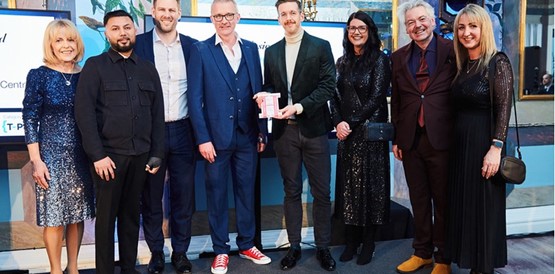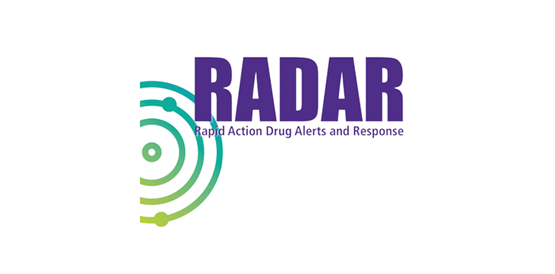Blog: Co-production
Author: Jason Railton, Digital Inclusion Development Officer at SCVO
Thinking about how we value and support people to get involved is about ensuring we understand where they’re at and how we encourage participation. Letting them know exactly what’s expected and how we will support and implement change is crucial.
What is co-production, and why should we bother?
Our services are full of experts. They are often undervalued and sometimes not recognised for the unique insights and expertise they hold. They also have a vested interest in ensuring the service itself is shaped in a way that most effectively supports the people that need it most.
Every service has the potential to ensure they access these experts because we all have them: our service users.
The people that use our services are the most knowledgeable about the specific circumstances we’re supporting them with. They are a goldmine of experience that can inform how we can develop and improve the support that we offer.
At our most recent Community of Learning, we wanted to dig into the idea of co-production and really understand what it is, how to do it effectively and the difference it can make. With thanks to Marissa Cummings of DHI, Hannah Boyle and Mia Anderson of Simon Community Scotland, and Haydn Pasi of Shine Women’s Mentoring Service, we’ve been able to pull some top tips for co-production.
Co-production is about interdependency
We know that users rely on the support of the services they access, but services also rely on the insights of their users. This co-dependency articulates how services and their users can work together in a way which empowers and continually improves the support offered. The interdependency is an incentive for both parties to work closely together and make the most of their time together.
Simon Community Scotland recognised a gap in terms of gendered support, and used a relational approach with the vulnerable women they work with to inform their By My Side app. It goes beyond substance misuse and considers the wider context of women’s lives.
Create the right environment for sharing
When working on co-production, the environment that we create is important to ensure that it feels safe, familiar and convenient for our experts. We will often be asking people to share emotional or distressing experiences which can make them feel vulnerable. It’s important that you demonstrate, clearly and honestly, how this information will be used, how it will inform service development, and how you can support them with what they’re sharing.
This was reflected by Simon Community Scotland, who said: “The co-production element would not work if the women didn’t trust that we were going to do it. It was a safe space that they could come. And what we very quickly saw was that they didn’t want to talk about substance use. They wanted to talk about the systemic failure they faced.”
Creating the environment of safety, honesty and sharing is vital in developing the trust that needs to exist between stakeholders.
Be intentional and reach people where they are
It’s important that we prioritise diversity in order to understand the spectrum of expertise that exists among the people we support. Being intentional in how we recruit for co-production is important because it enables us to eliminate bias and strengthen often marginalised voices. Thinking about how we value and support people to get involved is about ensuring we understand where they’re at and how we encourage participation. Letting them know exactly what’s expected and how we will support and implement change is crucial.
Shine talked about the number of ways they reach their audiences, through staff, a podcast, feedback forms and research. Developing different mechanisms to engage has enabled them to build their diversity of feedback at different points of the service and enable people to participate in co-production regularly and conveniently.
Co-production is a continual process that helps drive improvement
What differentiates co-production from co-design is that co-production should be a longer process that enables and empowers participants to have an ongoing dialogue with the services they access to shape, develop and improve how they are delivered. In doing so, everyone is better equipped to deliver and access the support they deserve.
Shine reflected on how feedback isn’t always able to be gathered at the point of exit in their service, and developing “Moments to Shine” (a Microsoft Form that practitioners can upload feedback to in real time) helps keep their service reactive and constantly improving:
“And we're hearing really good snippets of feedback from the women that we're working with and we've been using that. We've been sharing that with our governance boards, we've been sharing it with the wider team to really celebrate that feedback and success, but also feeding in, if there's any constructive feedback into some of our other mechanisms to make sure we're accountable to that and we're responsive to it. So that's overcome some of the barriers for our team.”
Follow through, keep your promises and communicate
Implementing change can be difficult – even more so when you need to balance the expectations of people that have actively become involved in shaping them with the practical realities of running a service.
Communication is key here. Be clear and realistic from the outset about what’s possible in terms of budget and timeline. Be open and transparent about how decisions are made and keep the rest of your service community in the loop. Encourage feedback and welcome constructive criticism about your process.
But most importantly: follow through. We can best demonstrate we value people’s participation by implementing the changes they’ve asked for. Let’s not forget they are the experts in the room, and as such we should treat them as we would any other expert: with respect.
Other stories

UK invests over £10 million to boost careers in addiction sciences
UK invests over £10 million to boost careers in addiction sciences
Digital Lifelines Scotland Wins Digital Inclusion Award 2025 – Bridging the Digital Divide
Digital Lifelines Scotland Wins Digital Inclusion Award 2025 – Bridging the Digital Divide
